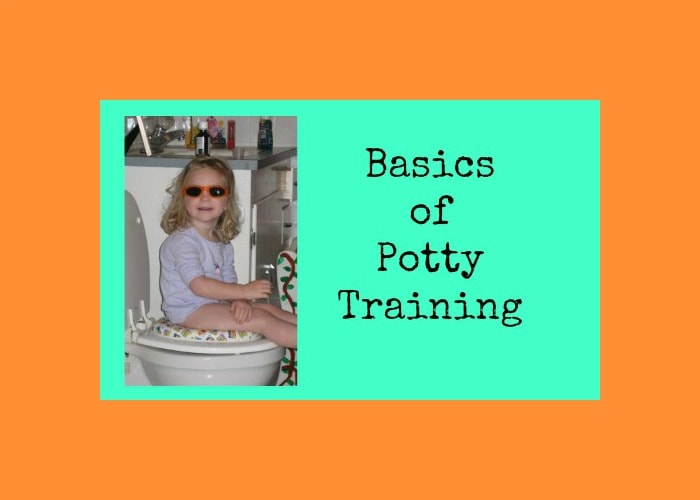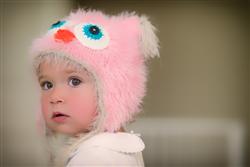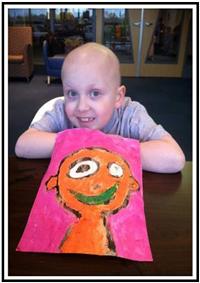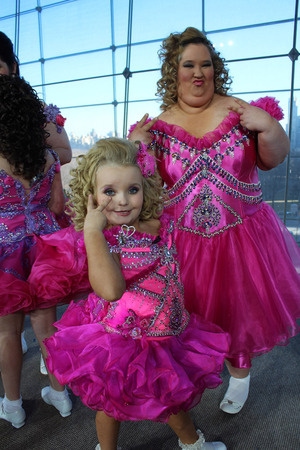Basics of Potty Training
By Steve J. Hodges, MD
Pediatric Urologist at Brenner Children’s Hospital
Everyone has a different strategy when it comes to potty-training your children. I have even heard of different tactics for boys vs. girls. Today, we are sharing a doctor’s perspective on the entire issue. This blog was written for us a few years ago by Pediatric Urologist, Steve Hodges. I hope some of these ideas from Dr. Hodges will help you when it comes time to train your little one.
There are two main questions most parents have about toilet training: 1) When should I toilet train my child? and 2) How should I toilet train my child? Unfortunately, there aren’t any straight answers to either question. Not that you won’t find a lot of opinions, but very few of them are based on scientific fact, just anecdotal views.
When to Train?
With regards to the timing of toilet training, there are two distinct camps here: the parent-centered and the child-centered approaches. The parent–centered approach typically occurs earlier, at around 18 months or so, and involves introducing the child to toilet training rather quickly by using a variety of methods, often by just removing the diapers. The child learns to go in the toilet or get wet/soiled, and it is actually quite surprising how quickly some toddlers can catch on. Proponents say that this method is more environmentally sound (less diaper waste), saves families money that they would otherwise spend on diapers, and forms the proper habits before children get too strong-willed or set in their ways. Some preschools or other children’s programs require that participants be toilet trained prior to entry, so this method may be forced on families due to these circumstances. Opponents to this technique believe that children much younger than three years old don’t possess the physical and mental capacities necessary to become properly trained, so there’s no use in trying.
The other approach, the child-centered method, usually occurs later (often after 30 months) and waits until the child is interested in training and generally takes things at a slower pace. Children must reach certain milestones, such as the ability to communicate, dress/undress, show interest in toileting, etc before training begins. Supporters of this technique point to fewer complications of potty training (bed wetting, accidents) in children trained at a later date. Detractors point to conflicting data (more accidents in children trained later), and the difficulties of training a child that is so used to being in diapers, and in the middle of the terrible twos or threes (their favorite word being “No!”).
There are no strong data suggesting that either approach is wrong. As Americans, we tend to train later than most (Europeans think we’re nuts), but the question remains – what is best for the child? Not the environment, not the preschool, . . . the child.
Well, for whatever it’s worth, this is the way I look at it. To be properly toilet trained, a child must go from the infant voiding/defecating pattern to an adult pattern, with the smoothest possible transition. How do we do that?
When we are babies and in diapers, we poop/pee totally by reflex. There is no thinking about it, we just go. As the bladder fills, it spontaneously empties, and the same with our bowels. These are probably the healthiest toileting habits we will ever have.
Adults go slightly differently. We sense the need to go, and as soon as possible, we find the closest bathroom and we go. The only difference compared to babies is that we use our sphincters to delay or put off emptying until it is socially acceptable.
So when children are toilet trained, two main things happen. First, they become aware of the urge and need to empty their bowels and bladder. Secondly, they learn to control when to go to the bathroom by squeezing and relaxing their sphincter. The child has to sense that the bladder/rectum is full, decide that he wants to go, and find a comfortable and safe place to go. Then he actually needs to go there, relax his sphincter, and take the time to actively and completely empty his bladder/rectum. That’s quite a lot to ask of a 2 year old.
What happens in reality is that once kids learn to put off going to the bathroom, they almost always put it off too long. They would rather play, watch TV, anything other than go to the bathroom. And when they do go, they go for the shortest amount of time possible, usually not emptying completely. When you put off pooping, you get constipated. When you put off peeing, you risk urinary tract infections, and often develop an overactive bladder that can result in wetting.
These bad habits can develop in a child toilet trained at any age, but in my opinion, if a three year old tends to put off emptying, a one year old will too, they will just do it for a longer time (potentially causing more problems). So it’s probably best to let the healthy infant emptying habits (just going in diapers) last as long as they can, and train at a slow, steady pace once the child shows interest. Sure you may have a 4 year old in diapers, but I promise they won’t go to college in diapers, and they will likely have fewer problems in the long run.
How to Train?
Now that we think we know when to train a child, how should we train the child? Well, whenever there are a million different ways to do something, you can be sure none of them is perfect. And this is the case with toilet training. In general, I believe the slow and steady approach is best here as well. The Brazelton method(named for the famous Pediatrician) makes the most sense to me. First you make sure the child is ready (can dress and undress, can communicate the need to go, has a desire to go, etc.). The you have them start by sitting on the potty fully clothed, usually when you go, so they can watch and learn. Then you start emptying the diaper contents in the potty so they learn what goes in there. Once the child has these concepts down, you pick a few days and have them go around without diapers in a room with a potty. After a few accidents, they catch on and begin going in the potty on their own.
Another method that is appealing in its methodology is the timing method. You simply have the child in pull-ups go to the potty at certain time intervals during the day (every couple hours of so) and reward them when they poop or pee in the potty instead of their diapers. Again, eventually they get it, and you have less cleaning up to do.
To be honest, the method of training really doesn’t matter. Even if you drop diapers cold turkey, the child will learn to go to the potty to avoid being wet. The key, and I cannot stress this enough, . . . the key is to not lose track of when your child is going to the bathroom after they are trained! Once children are trained, parents assume they will go when they need to. Believe me, they won’t. So what you need to do is keep track of when they go, and keep a look out for signs that they need to go. If you see your child doing the “potty dance”, don’t ask them if they need to go (they will say no), just take them to the bathroom. Once there, you need to make sure they take their time to empty completely, so its best to say that they need to sit on the potty for at least 2-3 minutes before they can say they are done. Also, instead of looking for signs of holding (like curtseying or squatting in girls, grabbing their privates in boys), you can always just impose a peeing schedule, that way you know they are at least trying to go every few hours.
You also need to keep a close eye on how they are pooping. Between 30-50% of kids are constipated and parents often have no idea. Make sure your child poops every day or every other day, and make sure the poop is gooey soft (like a thick milkshake). If they are going less frequently than every other day, or if their poop is painful or hard, consult with your pediatrician for treatment options. Constipation is probably the most common preventable cause of belly pain, bedwetting and daytime poop and/or pee accidents in children, so the importance of treating it cannot be overstated.
For whatever reason, people have very strong opinions on toilet training, so I try to not be too dogmatic in my recommendations. Everyone’s circumstances are different, and there are data to support almost any point of view. The key is to help your child develop the habits of regular and complete emptying of the bowels and bladder, and there are many ways to do that. Keeping in mind the points mentioned above should keep you out of most trouble, and hopefully lead to a happy, healthy and dry child.
For more information, you can check out these websites: www.homepottytraining.com is my website and has some useful ideas. The International Children’s Continence Society has an excellent site (www.i-c-c-s.org), check out the “general public” link.








Does anyone know anyone locally that can assist with potty training a boy with autism? I have a family in need of some assistance at home.